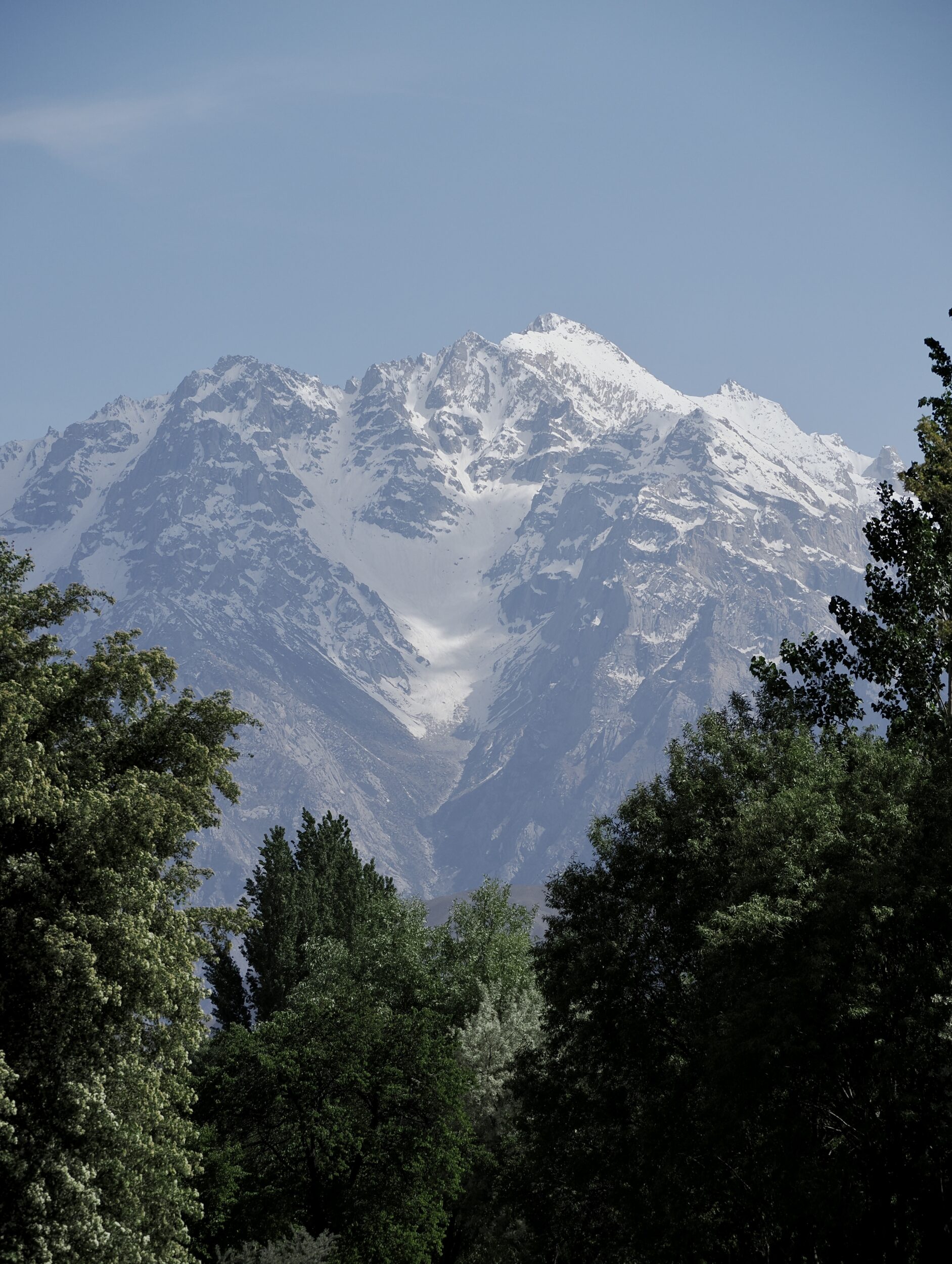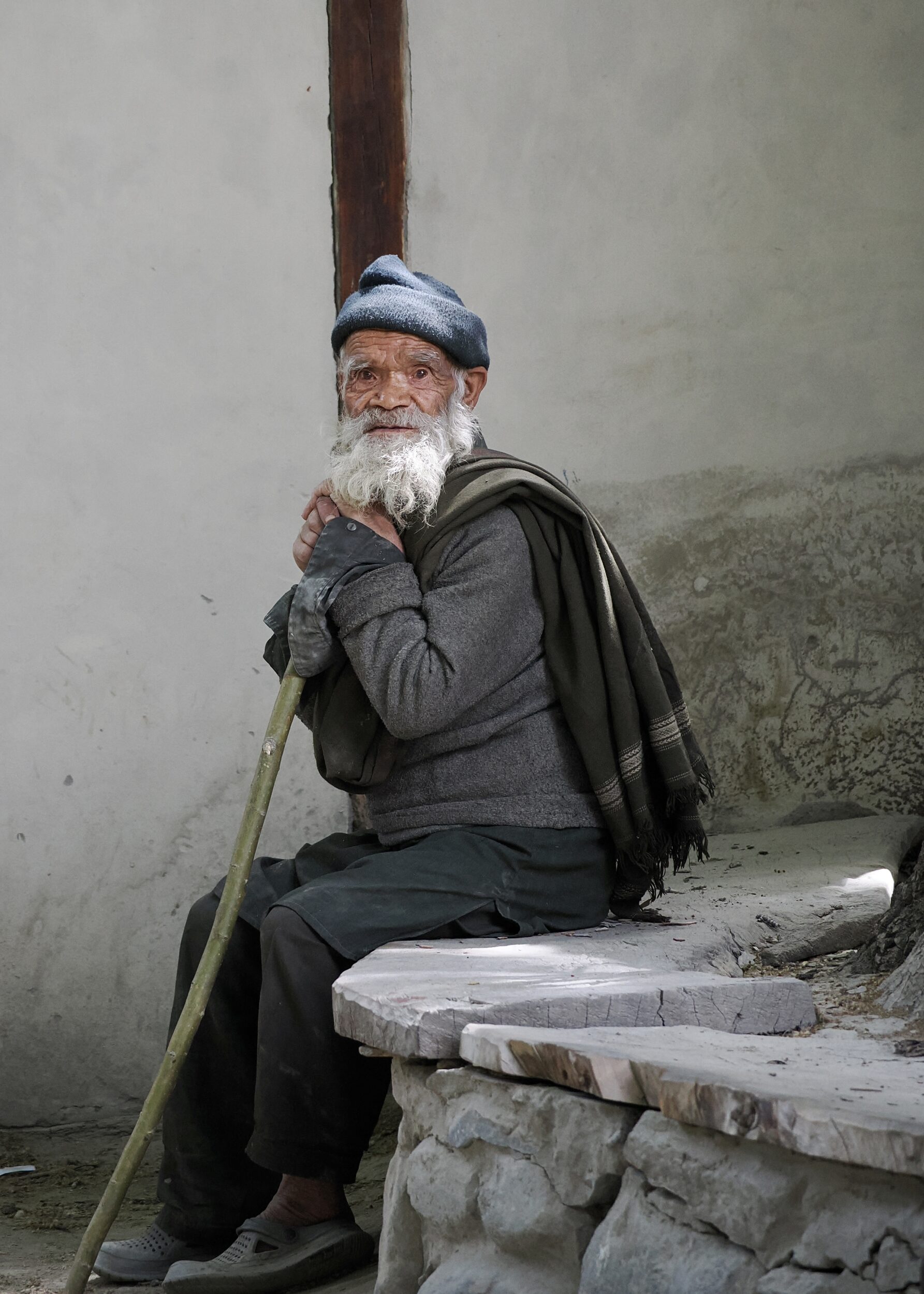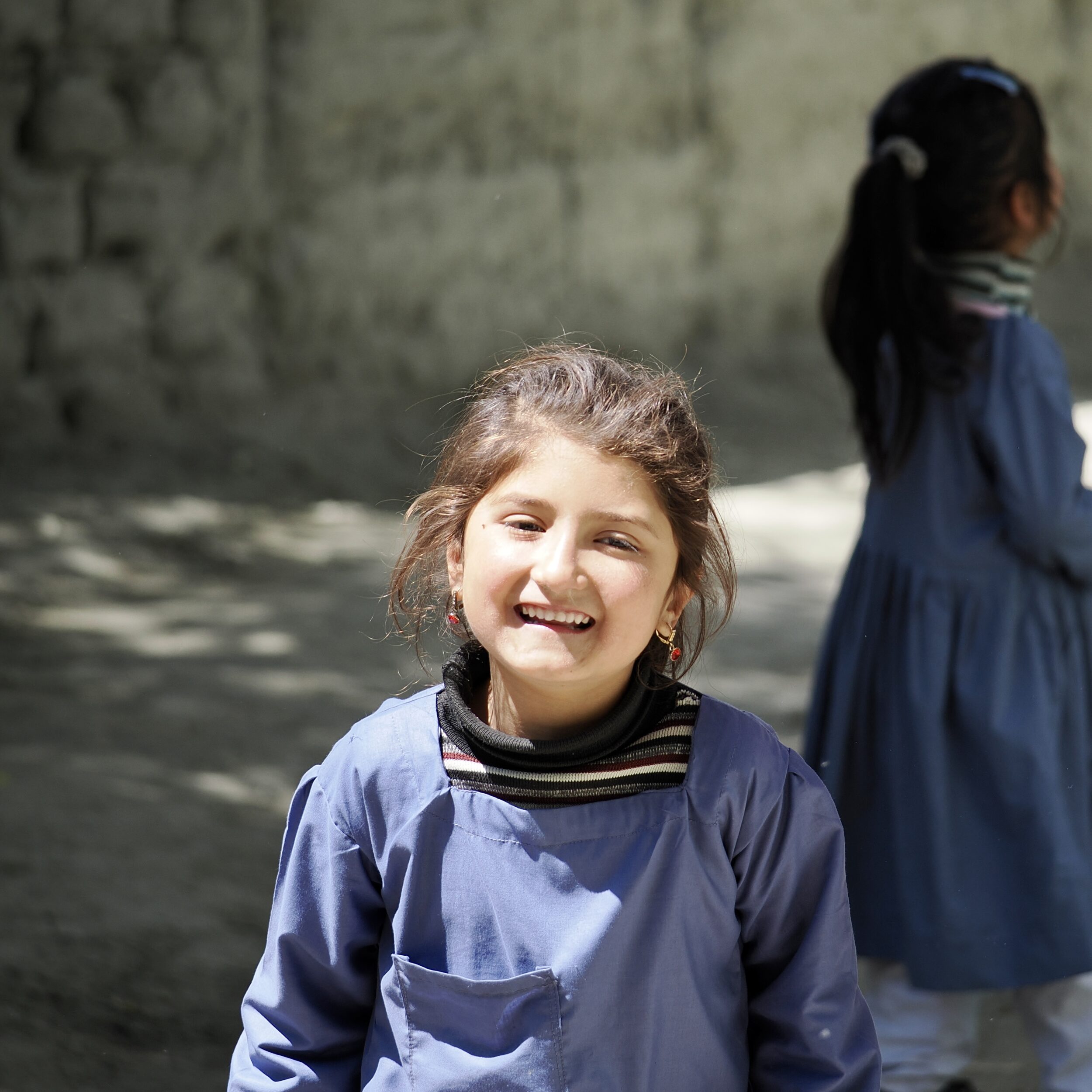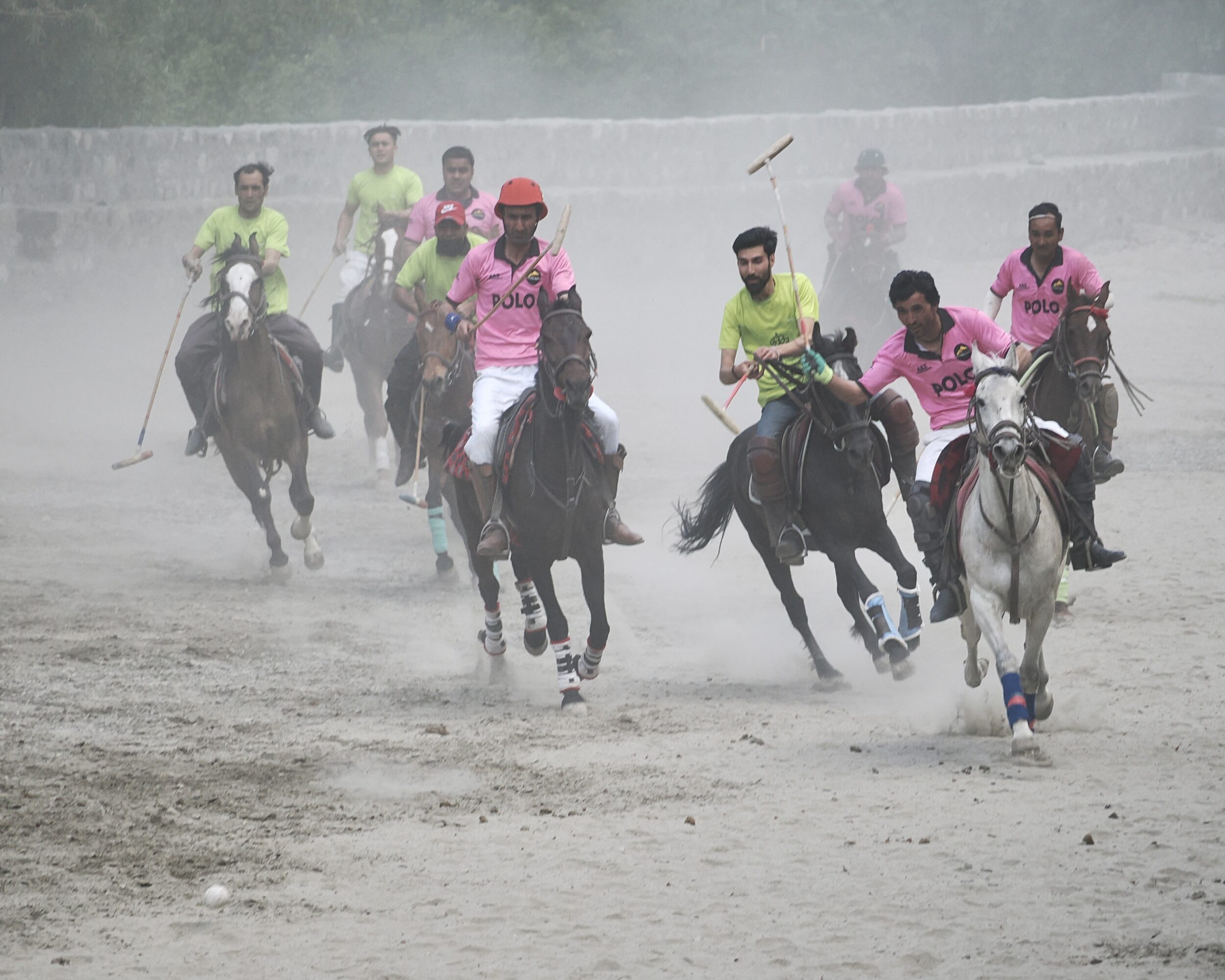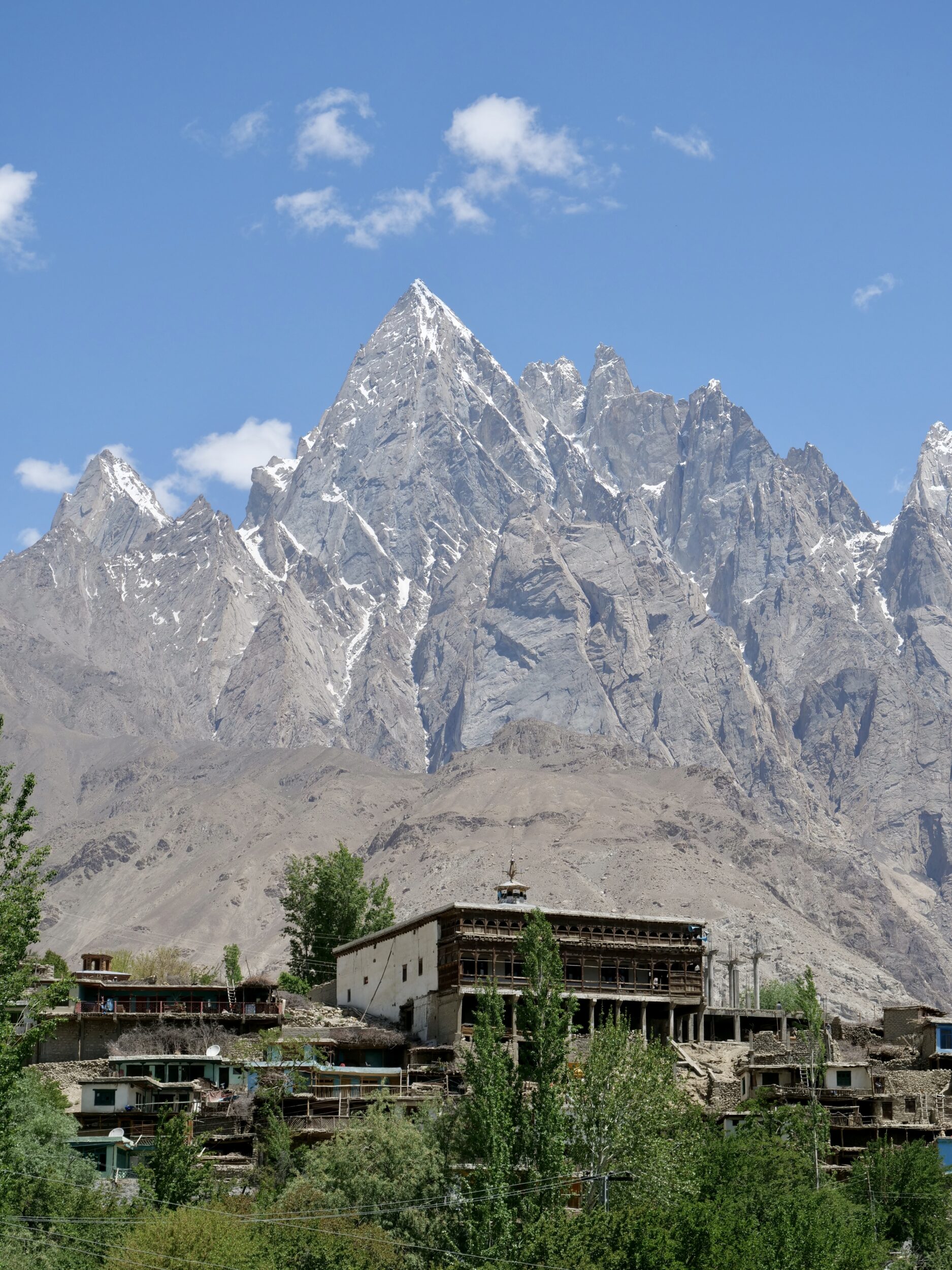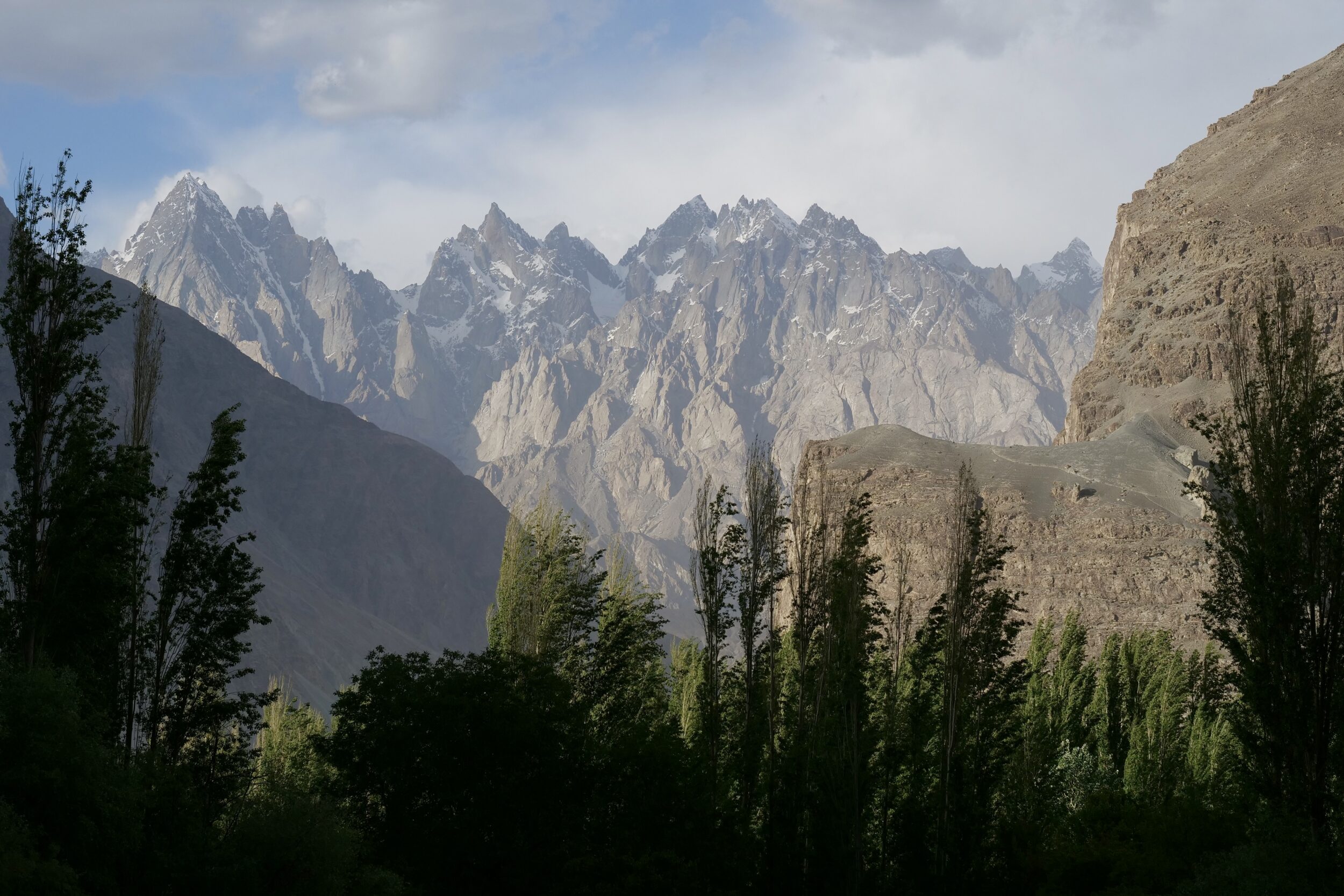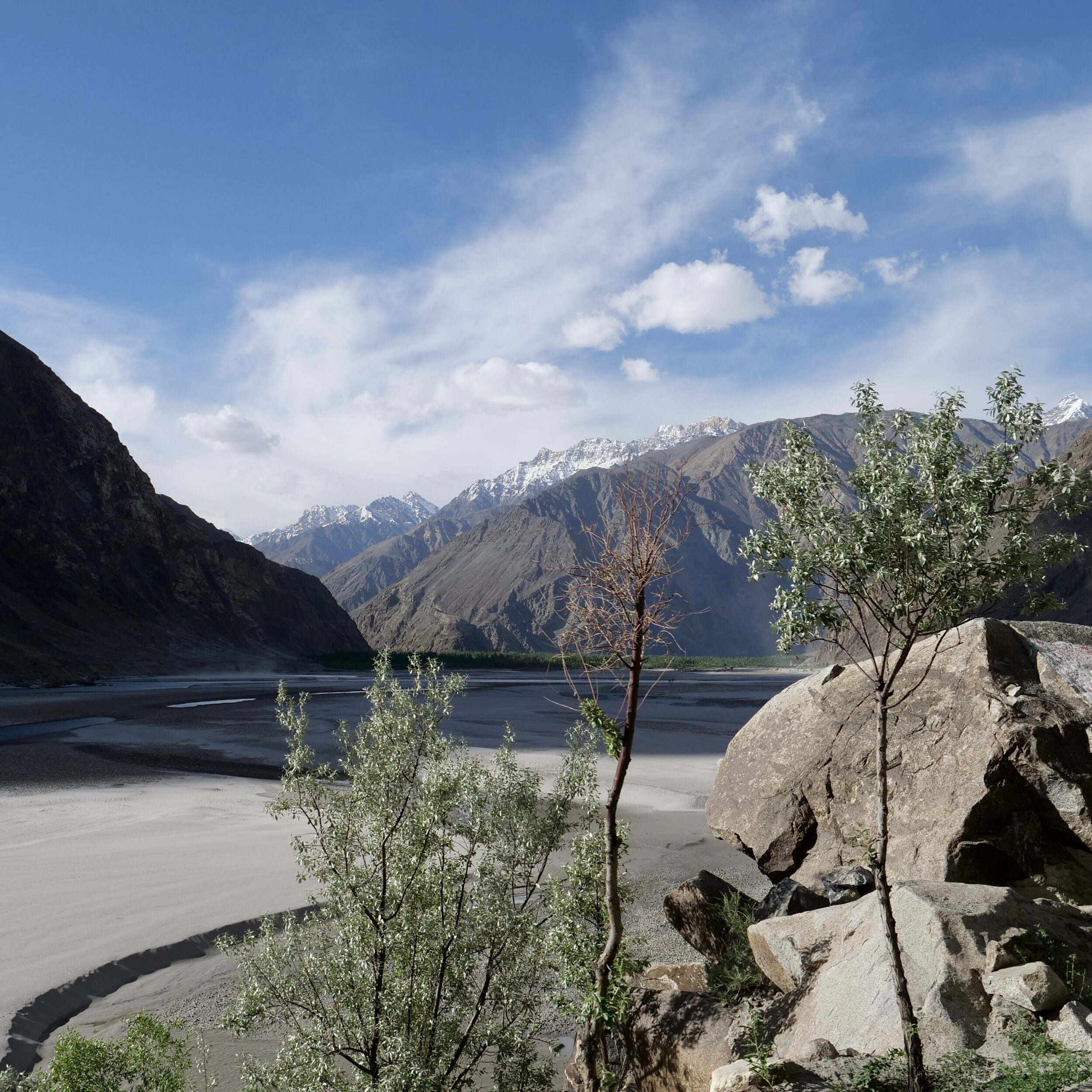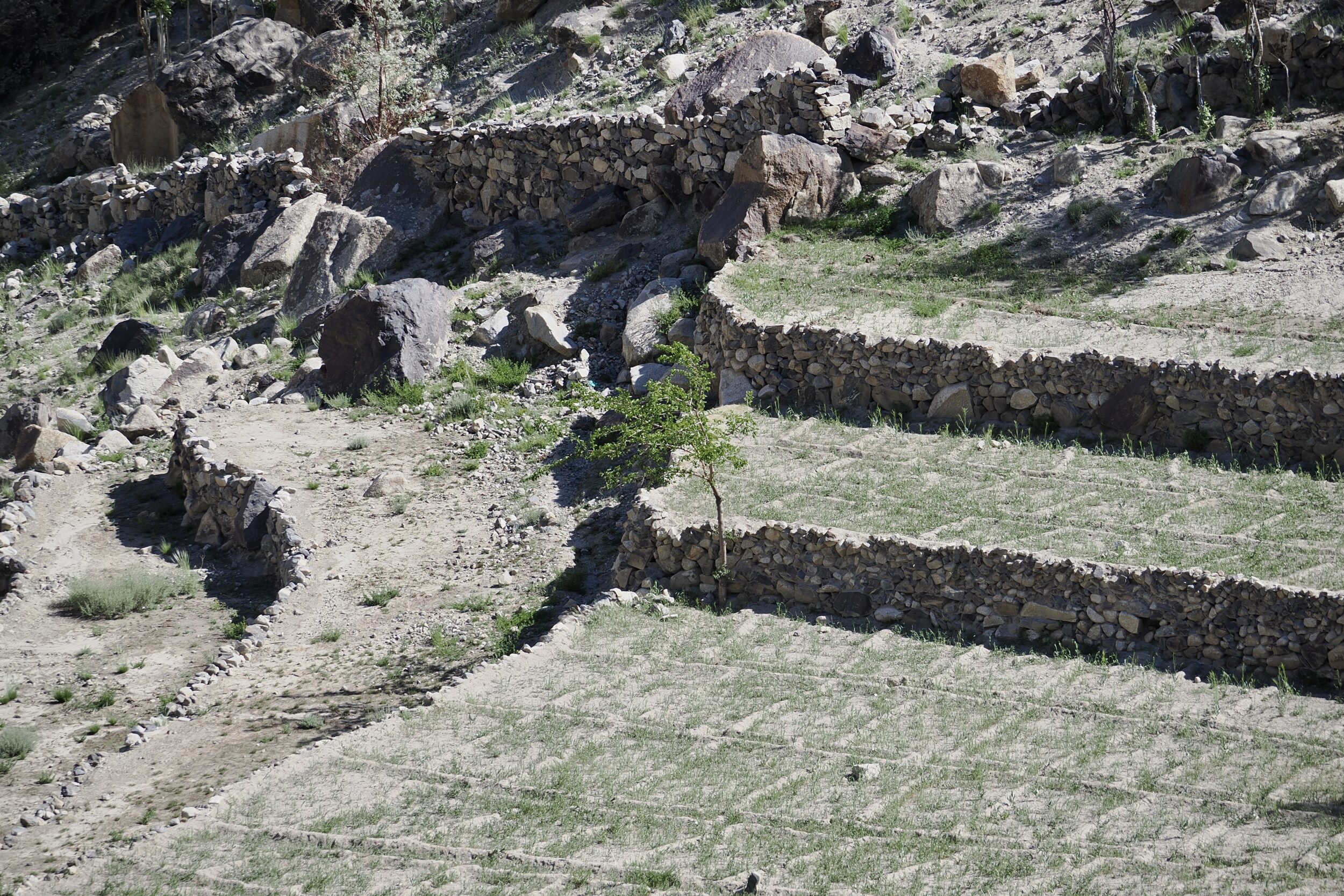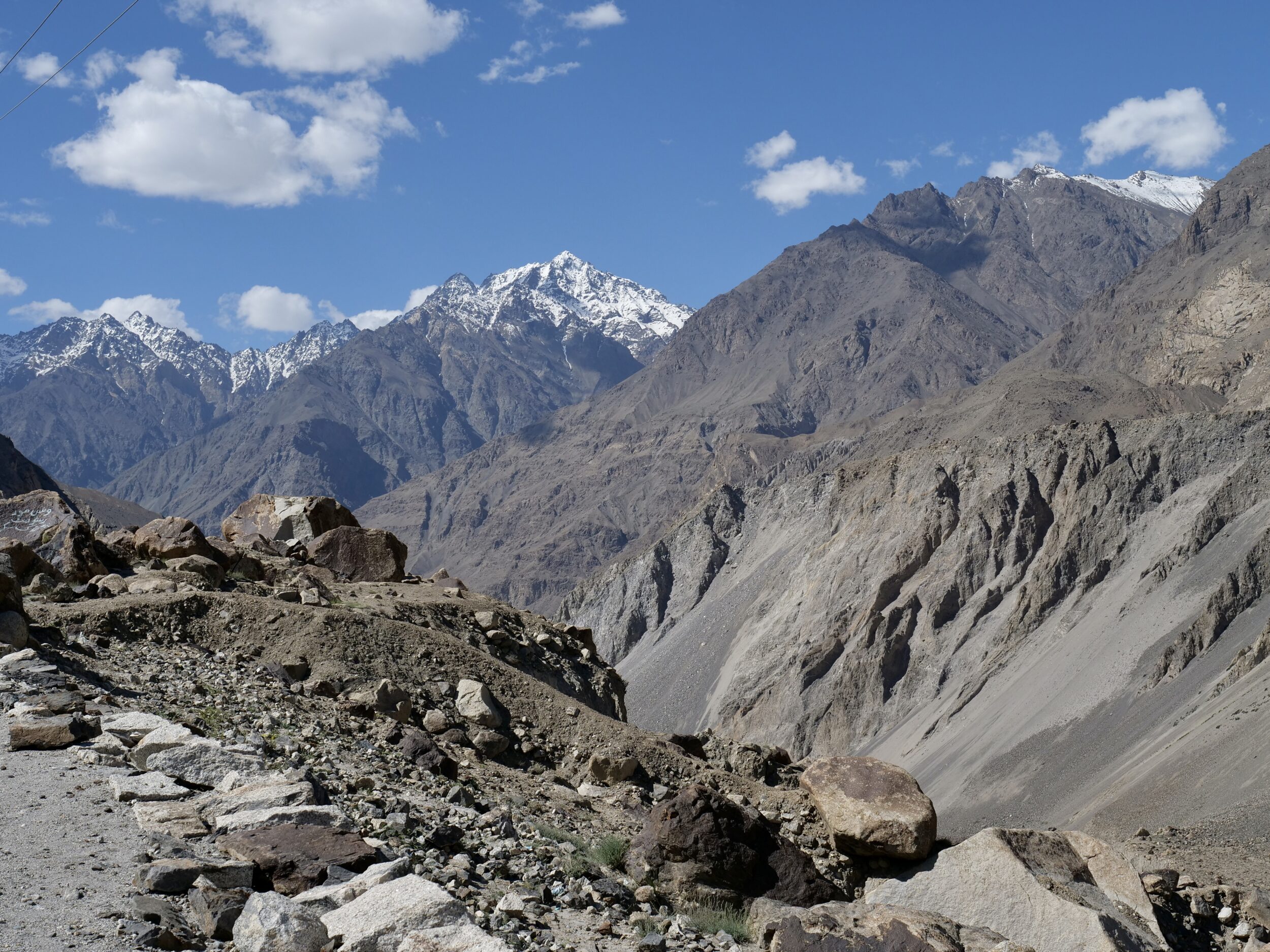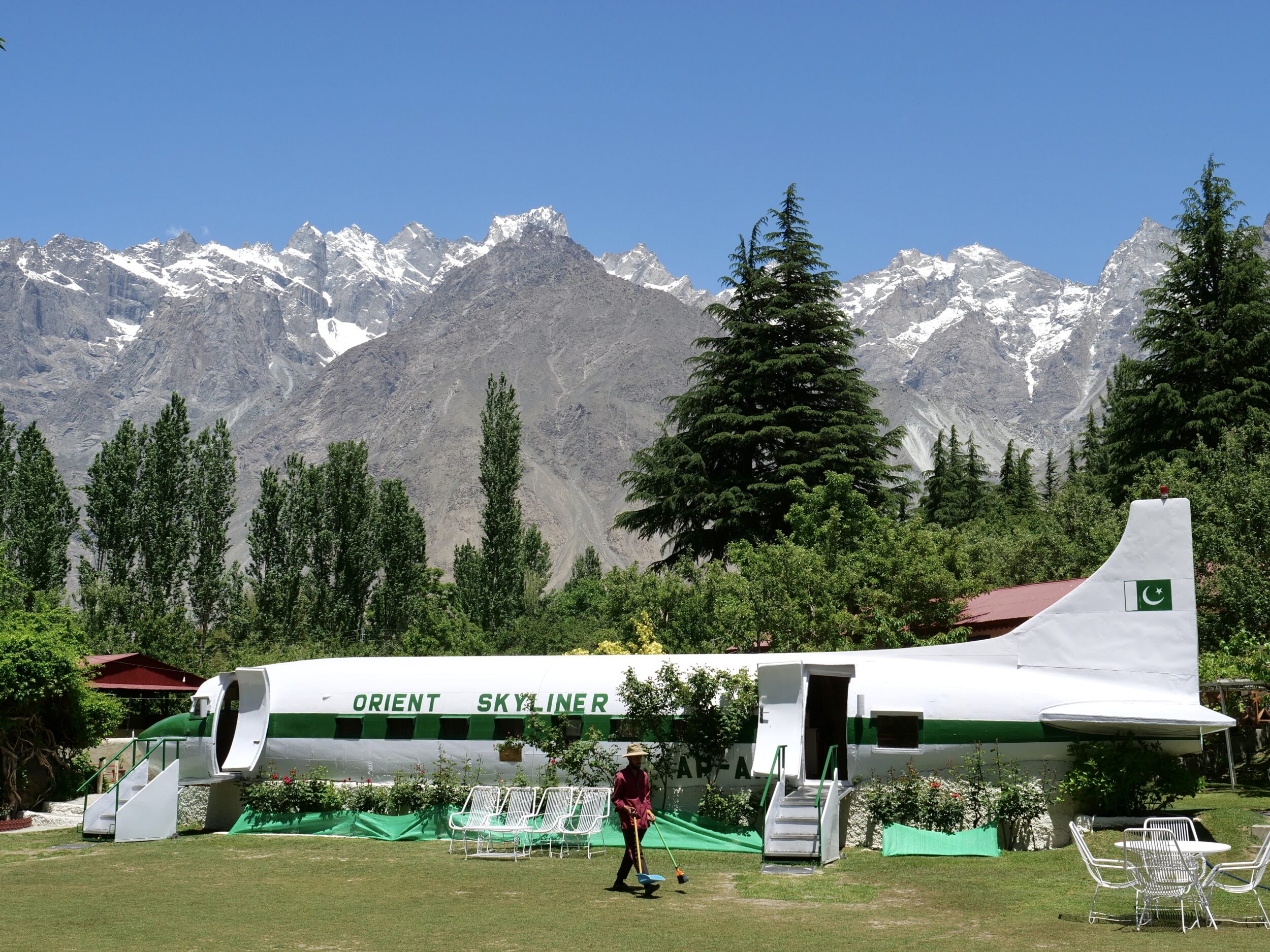If this post’s two photos were “the only available evidence”, you could assume – reasonably – that they were taken from vantage points far distant from each other.
In fact, the image below was taken less than sixty seconds after the one above, with the very same lens.
Above, I was looking across a Karakoram valley’s floor to the mountains on the far side
For the image below I had turned my head 180 degrees, shuffled my feet accordingly, then looked straight up the nearby, steep, stark, but seemingly more modest slope… our proximity to the relevant ridge (atop which the boulder perched) would have enabled it to “hide” any higher ground behind it.
As you can see, an “accident” was waiting to happen…
Comments closed